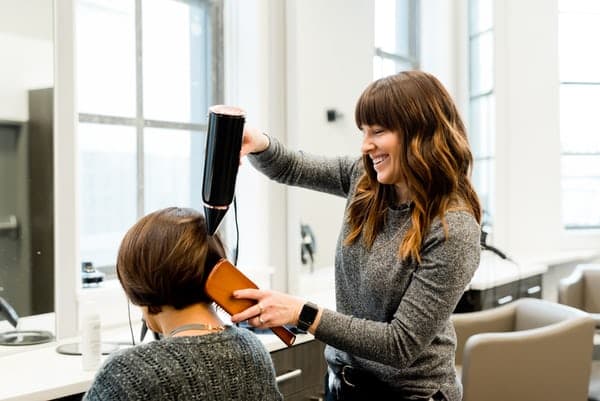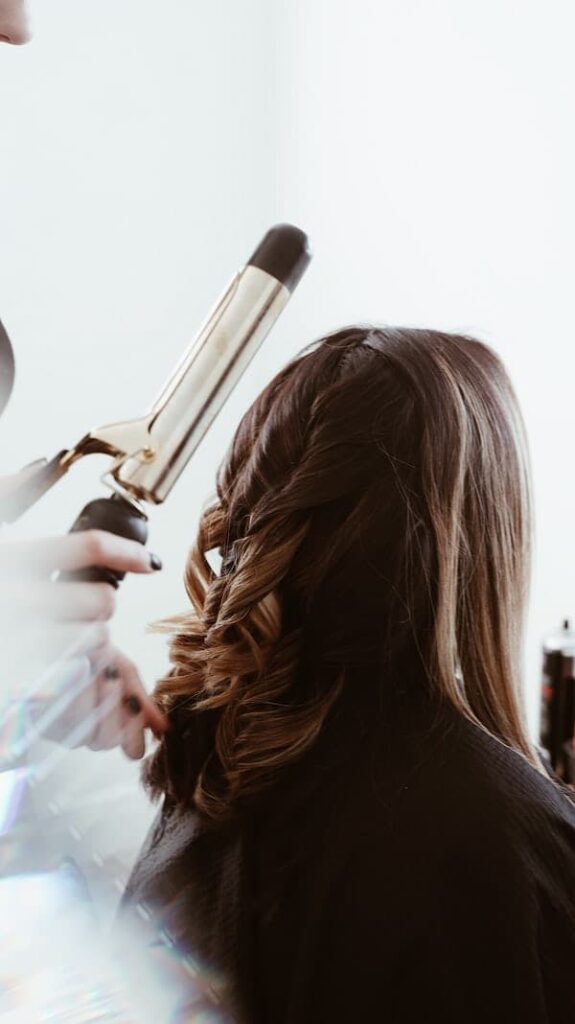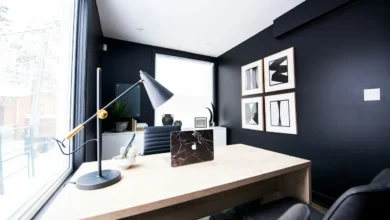Kick Start: a hair-raising problem
Hair salon owner Jose Bryce-Smith is looking to revamp the websites for her salon and range of dyes and hair care products. Is online video the answer? Does anyone want to see Hugo Weaving get his hair cut?
The panel
- Jonathan Crossfield, Netregistry. Expertise: web content
- Owen Lansbury, interactive designer. Expertise: online video
- Shonagh Walker, lifestyle and beauty writer. Expertise: beauty products and services
- Host: Josh Mehlman
Starting a conversation
Josh: Tell us a bit about the business and what you are trying to achieve through the website.
Jose: We’ve got two businesses: the first is a hair salon in Paddington and the second is a hair product company.
The salon’s unique selling point has always been that we use ammonia-free, natural dyes and products. We’re redoing our Atlantis Hair salon website at the same time as launching our Original & Mineral website, which is a range of ammonia-free colors and hair care products.
We didn’t have a big budget and we wanted to get the message of the brand across in a unique way. We want to create an online community of salon owners who use the products and to start a conversation with us and each other.
Jonathan: Social media sites can be very hard to get rolling in the first stages. If you go to the site for the first time and only two people have participated, you are less likely to come back than if there are 100 people talking on a regular basis. How will you get people to participate initially?
Jose: So the idea was to do videos, like a confession booth… ‘I’m Jose. I’ve been ammonia-free for the last seven years.’ We will have forums where people can post why they are interested in ammonia-free colour. There are a lot of myths around it – you know, it is not as permanent, it can’t do blonde as well.
Shonagh: I think that kind of interactive web content works extremely well. Perhaps a forum or chat room where members or visitors can swap ideas on trends and opinions on the latest looks of celebrities and the like. A Q&A forum is also good. Ask the experts – perhaps have a senior stylist do a live chat once a week or a colourist live chat.
Jonathan: Is there enough material to keep a conversation going for as long as you need on the bulletin board?
Jose: Hairdressers are highly passionate and creative people who like to give their opinions.
Who cares about hair colour?
Josh: Is the aim of it to get more salons to stock your products or is it to get consumers to buy the products from the existing stockists?
Jose: I think it’s both. It’s good for consumers to have a place where they can get more information. Once they see it in a magazine then they can understand the brand and who is using it. But as well, hairdressers are very interested in which other salons are using it and their opinions.
Hairdressing is very technical, particularly on the colour side, so we’re going to include some formulas and things that hairdressers will be able to relate to.
Shonagh: Consumers are really excited and passionate about hair colour! Especially those who colour at home, which we aim to stop unless they’re using one of Jose’s colours. Hair colour is one of the biggest aesthetic issues that concern women. I am frequently and endlessly asked about colour – how to get it, how to care for it, what products to use or how to correct bad home colour or even a salon colour that wasn’t what you expected.
Making video go viral
Jose: Will the videos get the message out there?
Jonathan: Video is fast becoming one of the biggest things online. I read recently that people under 35 watch on average two hours of streaming video a week. Your video idea definitely has legs because it is what a lot of people are looking for online. But it also means you are going into a very busy marketplace where there are millions of videos. You have to make sure yours does not get lost in the shuffle.
You can submit your videos to sites like Digg, Twitter or Facebook and have links back to your website.
The aim is to get your video off the site and as far out there as possible, in a way that people will know where it originally came from so they will hopefully come back.
Owen: There’s no definitive secret to why viral videos take off online beyond being a good laugh. Most marketing-driven viral videos fail because they’re too conscious of pushing the product.
The most successful example in recent years is the video of someone breaking into an air force base and spraying “Still Free” on President Bush’s plane. It was a brilliant, million-dollar hoax that caught the media’s attention because it was topical, controversial and had no blatant product tie-in. It totally captured the counterculture essence of the brand behind it. OK, so Jose doesn’t have a million dollars, but it was the idea that was captivating as opposed to the complexity of the production – the ‘wow, I can’t believe they did that moment.
Host with the most
Jose: Is it better to host the video on our own site or through YouTube?
Jonathan: Hosting your own video can be expensive. Most hosting packages limit how much information you can store on the server and also how much can be accessed each month. If you get a lot of people watching a video that is a couple of megabytes in size, that quickly uses up your quota, whereas a web page is a handful of kilobytes.
Some businesses fall into trouble because they don’t understand the differences between those file sizes and they whack a video onto the site. If the video is popular, suddenly they’ve got a huge hosting bill they didn’t expect.
A lot of sites host their videos with an external company like YouTube. Of course, with that, you have a YouTube logo in the corner of every video unless you pay. There are similar services, such as Viocorp which is based in Sydney, that do video hosting but they are more expensive.
Owen: Viral video is all about handing over control of your campaign to the masses. Once it’s on YouTube and successful, there’s no pulling it back in. If you use a corporate hosting service, the illusion of it being an authentic video is diminished, but you have more control.
Attracting consumers
Jonathan: Is the goal of the website going to encourage people to visit the offline store through a store locator or are you going to offer sales through the site as well?
Jose: We’re not going to sell through the site at the moment. We have other sites that sell for us, so it’s not something we’re looking at. We really want the customers to go to a salon. We mainly have an online presence for people in areas where we don’t have stockists. We have 60 stockists in New South Wales but only one in the Northern Territory, to give you an idea.
Jonathan: So to attract those people to the website, there needs to be more than just the videos.
Shonagh: People want web content that is concise, easy to read and information-rich. We expect instant gratification!
Things like tips, hints and how-tos work really well. For instance, three easy steps to get a salon-perfect blow-dry at home. How to make thin hair look finer. What to do with three-day dirty hair when you don’t have time to wash.
I would have a section of the website devoted to editorial style feature articles on hair – the latest colours, how to get gloss and shine – and weave product mentions into that. I would also have a ‘spotlight on’ section and each month highlight a particular hue in the range and explain how it works, what colour it will achieve on what base.
Above all, it has to be written in an engaging manner, as though you were chatting to a girlfriend. The sentences should be short and concise. Keep it light, informative and friendly.
Before and after?
Josh: What about the salon website?
Jose: We are doing a more basic website but we had the idea of putting cameras in the salon and running footage of what goes on. A big part of the salon is the atmosphere and the banter. We want to get that across through the website.
Shonagh: Yes, perhaps a well-edited video on a hair make-over from ‘before’ to ‘after’, step by step, the consultation, foiling, treatment, cutting and styling. It would be a great way to show first-time salon goers what goes on and what to expect, and also prompt people into changing their look or heading into the salon for a make-over themselves.
Jonathan: I think you need to be very careful about who you use in the videos and that they understand very clearly what the relationship is, because a lot of people get surprised when they see themselves appear on YouTube.
Jose: Yeah, We would be showing them the beautiful people finished, getting their hair blown. It will be kind of high action, high glamour.
Jonathan: That gives you another channel for people to view the videos and discover your business. It would then come down to making sure that people could find those videos, attaching the appropriate keywords so that someone looking for ‘hair video’, for example, will find it.
Jose: So it’s in the title, then?
Jonathan: With YouTube, there’s the title and a short description. So you’d make sure the description contained the words people would use when they’re looking for that kind of video. You’ve always got to think in those terms – how is someone going to find your website, your forum or the videos?
Owen: Without keyword tags and descriptions, search engines can’t find and index your videos. On the other hand, this won’t matter as much if you just want the video to be viral and users forward links to each other.
Hugo Weaving’s hair video
Josh: Are any of your customer’s famous people who might agree to be included?
Jose: I was just actually thinking that. We have got a few. So I could do a video featuring whoever and then if people searched on their name, my video would come up?
Shonagh: Great idea. They would probably charge like a wounded bull for it though – perhaps they’d accept a contra deal?
Jonathan: That sort of thing works, although of course, you have got to remember if they are a famous person, there will be a lot of entries of them in Google. But it could really help if the title was ‘Hugo Weaving’s hair video’, rather than just ‘hair video’.
Owen: It all comes down to the strength of the idea and getting that idea across in a short amount of time. One of the funniest fly-on-the-wall viral videos I remember was of women’s facial expressions while they were getting Brazilian waxes. But would the celebrities be up for that?
If you’re making the investment, don’t skimp on a good writer or hope that what you personally think is funny will work on a wider audience. Like any good marketing campaign, test it with your target audience before dropping your whole budget into it.
Jonathan: I’ve seen websites do a wonderful piece of content that goes viral through the web, there are people emailing it everywhere, but it doesn’t actually sell their product. At the end of the day, they’ve had a million people hit their website to see the video, but sales didn’t go up because the people watching the video weren’t in the market for the product, they just found it funny. It is about finding a balance between appealing to a wide range of people and getting the product information in there in a way that converts to sales.
Owen: Define your brand essence and use viral video as an element to support that as part of a wider campaign. Remember that if you’re lucky, people will watch it once and forward it to a friend or post it on Facebook, but that’s about the limit of engagement you’ll get. Make sure this is supported by a broader campaign and mechanisms to help your audience to engage with you directly.






